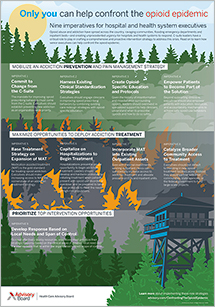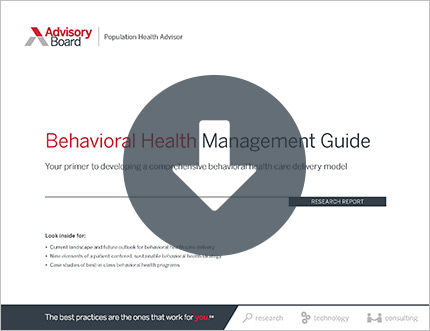Auto logout in seconds.
Continue LogoutThe suicide rate among U.S. residents between the ages of 15 and 24 is at its highest since 1999, according to a study published Tuesday in JAMA.
Primer: Learn about 9 innovative behavioral health care delivery models
Study details
For the study, researchers from Harvard Medical School analyzed CDC data on deaths among 15- to 24-year-olds in the United States.
They found that, overall, the suicide rate among U.S. residents ages 15 to 24 increased by 51% over the past decade, reaching its highest point in 2017 since 1960, when the U.S. government first started tracking such statistics, according to Oren Miron, the study's lead author.
The researchers found that the suicide rate among U.S. residents ages 15 to 19 increased from 8 per 100,000 people in 2000 to 11.8 per 100,000 in 2017, while the suicide rate among U.S. residents ages 20 to 24 increased from 12.5 per 100,000 in 2000 to 17.0 per 100,000 in 2017.
The researchers found a notable increase in suicide rates among women ages 15 to 24. According to the study, there was an 87% increase in the suicide rate among women in that age group from 2007 to 2017, compared with a 45% increase among men in that age group. Still, the suicide rate among men ages 15 to 19 increased from 13 per 100,000 in 2000 to 17.9 per 100,000 in 2017, reaching its highest point since 1980.
Reasons for the increase
The researchers suggested a variety of factors might have contributed to the rise in suicide rates among U.S. teens and young adults, including increased use of social media, high rates of depression and anxiety, and a greater willingness among families and officials to acknowledge suicide as a cause of death.
Miron added that there also "are a lot of reasons to suspect" that the opioid epidemic has played a part in the suicide rate increases.
Ian Rockett, a professor emeritus in the department of epidemiology at West Virginia University, also thought the opioid epidemic, as well as the U.S. economy, might have played a role in the suicide rate increase. "We've had a lot of stresses and strains on society. The Iraq war took its toll and then there was the Great Recession of 2008. And all of that was going on at the same time as the beginning and burgeoning of the opioid epidemic," he said.
Similarly, David Brent, academic chief of child psychiatry at the University of Pittsburgh School of Medicine, said, "Despite some parties being very optimistic about the American economy there have been a lot of people left behind." He explained, "There is some evidence that there is a relationship between economic distress and suicidal behavior in kids."
Nadine Kaslow, a professor of psychiatry and behavioral sciences at the Emory University School of Medicine, said the study's findings were "unfortunately not a surprise," and speculated that an increased use of technology might have led to more cyberbullying, which can drive depression and suicidal thoughts.
Jean Twenge, a psychologist at San Diego State University, said teens and young adults have become more depressed over the past 10 years and seen higher levels of psychological distress than previous generations. "I don't think it is an exaggeration at all to say that we have a mental health crisis among adolescents in the U.S.," she said.
Lisa Damour, a clinical psychologist specializing in the treatment of adolescents and young adults, said the findings should serve as a reminder that "depression is a treatable condition, and it needs to be treated." She said it is important to remember that depression is a chronic condition that presents itself in a person's teens through episodes of sadness, crankiness, and irritability. "Asking kids if they feel down or suicidal will not cause them to be down or suicidal," Damour said, adding, "Don't be afraid to ask" (Owens, "Vitals," Axios, 6/19; Carroll, Reuters, 6/18; Healy, Los Angeles Times, 6/18; Budryk, The Hill, 6/18).
Primer: Here are 9 innovative behavioral health care delivery models
Behavioral health conditions are prevalent, often undiagnosed or untreated, and deeply entangled with chronic disease management, which makes them one of the most costly conditions today.
This report outlines nine targeted behavioral health program models designed to more effectively address the needs of patients with behavioral health conditions.
Don't miss out on the latest Advisory Board insights
Create your free account to access 1 resource, including the latest research and webinars.
Want access without creating an account?
You have 1 free members-only resource remaining this month.
1 free members-only resources remaining
1 free members-only resources remaining
You've reached your limit of free insights
Become a member to access all of Advisory Board's resources, events, and experts
Never miss out on the latest innovative health care content tailored to you.
Benefits include:
You've reached your limit of free insights
Become a member to access all of Advisory Board's resources, events, and experts
Never miss out on the latest innovative health care content tailored to you.
Benefits include:
This content is available through your Curated Research partnership with Advisory Board. Click on ‘view this resource’ to read the full piece
Email ask@advisory.com to learn more
Click on ‘Become a Member’ to learn about the benefits of a Full-Access partnership with Advisory Board
Never miss out on the latest innovative health care content tailored to you.
Benefits Include:
This is for members only. Learn more.
Click on ‘Become a Member’ to learn about the benefits of a Full-Access partnership with Advisory Board
Never miss out on the latest innovative health care content tailored to you.


